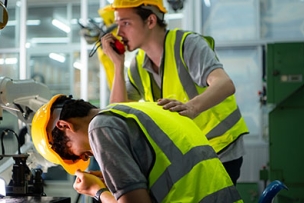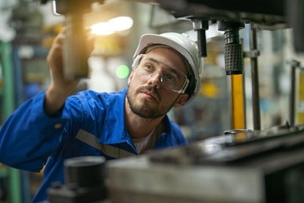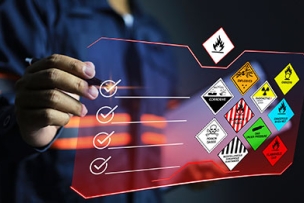From dizzying heights to flammable materials and toxic environments, hazardous working conditions are part of the job for oil and gas production and refinery workers.
The industry suffered 470 workplace fatalities in production sites alone from 2014 to 2019, according to a National Institute for Occupational Safety and Health database, and occupational injury rates have historically been seven times higher than for the U.S. workforce as a whole.
Consequently, energy industry employers must provide a wide array of personal protective equipment, both to help keep workers safe and to comply with federal regulations.
“Whether workers are drilling, storing, transporting or refining, safety managers need to make sure their crews are safe from the moment they clock in to the moment they clock out,” says PPE supplier Honeywell, which specializes in state-of-the-art products from ergonomically designed fall protection to respiratory gear.
“These folks are dealing with chemicals and gases that not only pose a threat to safety and comfort in very specific ways, but they’re also dealing with things like corrosion, heat exposure and explosive materials,” says Cicely Dyson, a Honeywell account manager whose customers include refineries along the U.S. Gulf Coast.
Among the priorities for many of those refineries at present is preparing for new ladder safety regulations from the U.S. Occupational Safety and Health Administration, she adds.
Ladder Safety
OSHA altered its standard governing ladders taller than 24 feet in November 2018 to require that new ones be equipped with a personal fall arrest system or ladder safety system, dropping a previous provision that allowed cages or wells—essentially barriers around ladders—as substitutes.
Businesses already equipped with ladders that stretch more than 24 feet have until 2036 to replace cages and wells with the systems required under the revised rule.
The deadline may seem distant, but “people are budgeting for that right now because the last thing that they want to do is wait right until the end,” Dyson says. “In many cases, these are custom products that are going to require time for fabrication and things such as that, so that is a high concern.”
Among Honeywell’s options for compliant ladder safety equipment is the Söll Vi-Go fall arrest system, which is available with two cable sizes and features components made of galvanized or stainless steel that can withstand harsh environments.
Designed to stop a fall in progress, Vi-Go can be used with either new fixed ladders extending more than 24 feet or retrofitted to old ones.
Much of the equipment needed by oil and gas operations, whether it’s fall protection or personal safety gear such as face masks and respirators, is location-specific, Dyson points out.
“That’s where it’s very important to have your vendor partners, such as Honeywell, engaged so that we can go in and make sure that we’re matching them with the right specifications for whatever hazards they may be experiencing,” she says.
The need for PPE—especially respirators, protective eyewear and fall safety harnesses—often increases during refinery turnarounds, or planned breaks in production for equipment and facility maintenance.





Talk to Us!
Leave a reply
Your email address will not be published. Required fields are marked *